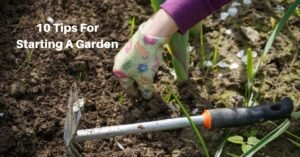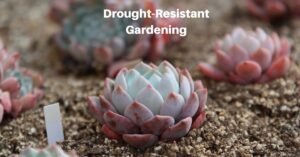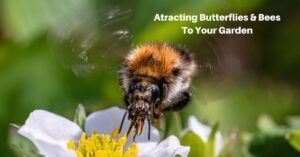Bee and wasp stings are always a risk when gardening. They can be painful and even dangerous for those who suffer from allergies. So it’s important to know how to treat them if and when they happen.
Of course, there are also precautions you can take to keep these insects at bay. But that requires special consideration, particularly when talking about bees. They’re an essential part of our environment, and their “work” spreading pollen helps keep us nourished. Still, you don’t want to have to deal with beehives or wasp nests where they can endanger you, your family, or your pets.
Let’s look at some basic steps to take in case you have to treat a sting.
If You Have An Allergy
If you already know you’re allergic to stings, be sure to take extra precautions. Wear long pants and long sleeves, for instance. If you do see pests around, slowly and calmly move away.
But if you do get stung, be sure to follow the advice your medical professional has already given you. That may include injecting yourself with epinephrine (an “Epi-pen”) or using an emergency albuterol inhaler.
Seek medical attention, as well. You may need further treatment such as oxygen or IV antihistamines or cortisone.
If You Have a Severe Reaction To A Sting
If you’ve never been stung before, you may have an allergy without knowing it. Anything more than mild irritation should be taken seriously.
If you have difficulty breathing, visit the emergency room or urgent care center nearest you as soon as possible.
If you had a serious reaction in the past and didn’t seek treatment, consult a doctor. They can make recommendations about how to be prepared in case it happens again.
Be prepared to tell the doctor when you were stung and on what part of the body. Identify the creature that stung you, of course. Talk about the reaction you had to the sting, and any other allergic reactions you’ve had. Be sure to include all types of allergies, not just those related to bees and wasps. Also, be ready to provide a list of any medications, supplements, or herbal remedies you may be taking.
They can also conduct tests to see if you have an allergy. There are skin tests and blood tests that can help show if you’re allergic.
Treating A Sting If You’re Not Allergic
Even if you’re not allergic, a sting can still be painful. So you’ll want to treat it and help eliminate the pain, itching, and redness.
If you’ve been stung, first try to remove the stinger. A bee’s stinger normally detaches from its body when it stings. The bee will die as a result, which might seem like a small consolation. A wasp’s stinger generally stays attached to its body.
Don’t squeeze the stinger or use tweezers; you don’t want it to release more venom into your body. Instead, brush it off with your fingernail or a piece of gauze.
As hard as it may be, avoid scratching! It may gain you some short-term relief, but it increases the risk of infection and can make you itch even more.
Wash the area around the sting with soap and cold water, then apply a cold compress to help minimize swelling.
You could also apply calamine lotion or hydrocortisone cream to help relieve itching.
If the itching persists, you might try diphenhydramine (Benadryl) or chlorpheniramine (Zyrtec). Be careful, though, as both cause drowsiness. Don’t use them if you’ll be driving or participating in other activities that call for your full attention.
You might also want to take some over-the-counter painkillers. Ibuprofen is usually a good bet to help relieve the pain of having been stung.
Conclusion
Getting stung by a wasp or a bee can be painful. If you’re allergic, it can be far worse. If you know you’re allergic, be sure to take proper precautions and seek treatment immediately if you do get stung. But even if you aren’t allergic, you’ll want to take care of the spot to help eliminate itchiness and soreness.









